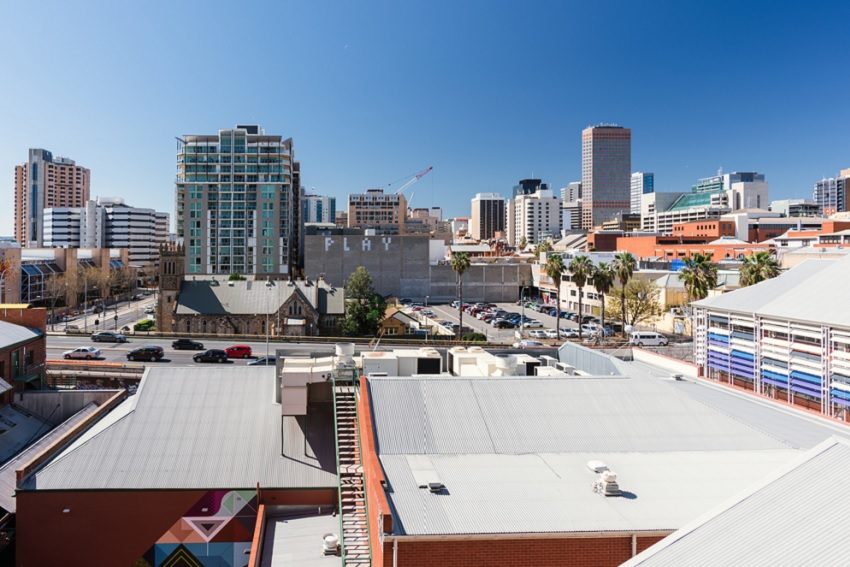Montefiore: Council's Secret Property Paradox

Sir Monty ponders how the now-widespread ‘commercial in confidence’ excuse has overwhelmed transparency and accountability about property dealing by Town Hall.
Many City of Adelaide South Australians – the owners and tenants of more than 20,000 city rateable properties and who paid $95.2 million in 2016–17 rates – know nothing about an activity that spends some of this money – sometimes in large amounts.
Over many years, Town Hall has occasionally spent big on city land or buildings, quietly, behind the scenes. When media hoopla breaks out about some city residential development, a little homework might reveal that Town Hall may have previously purchased the land, held it for a while in its ‘land bank’, then offered it to a developer on terms.
It’s gone on since the 1960s, a way to encourage residential development. Town Hall sometimes does it itself. It’s managed the development of multi-storey apartments in recent years on such land, for ‘affordable housing’. However, for more than 40 years, no formal policy existed about the buying or selling of ‘strategic land and property’. The first was written in 2001, updated in 2009 and again in 2015. Administrators claim that Town Hall also plays an important role in amalgamating parcels of land that, in their original sizes, would be of no interest to developers.
However, developers in years past argued that this skewed demand, distorting prices for other land and buildings. About 10 years ago, the city experimented with managing one of the then-tallest residential high-rise concepts on Morphett Street at the Balfours site –‘West Central’ – for which in 2006 it had rezoned land for a $27 million development of five 18-storey towers. Ultimately it saw only one, eight years later. That intrigued some developers. But the practice endures, and accumulates million-dollar assets. A confidential summary of Town Hall’s strategic property portfolio investigations was revealed to councillors on 12 December 2016 and ran to 474 pages.
The portfolio reports to key performance indicators which (among other things) include the post-tender/return-on-investment (sale) debriefs and the increase (or decrease) in net revenue. Success or failure remains a secret and Town Hall has a deft approach to rationalising its secrets. First, it promises all. “The acquisition or disposal of land and infrastructure assets process will provide an ethical, accountable and transparent system to ensure best value in the expenditure and management of public money.”
However, “commercial confidentiality will apply to negotiations for acquisition and disposal … unless council decides otherwise.” It rarely does. And finally: “Commercial confidentiality [C-in-C] will ensure that council does not provide an undue advantage to any party it may be contracting with for any proposed acquisition or disposal of an asset it is proposing.”
The lack of open reporting also means that the effect of government policy on Town Hall’s report card can’t be critically examined. In 2012, a political ‘asteroid’ hit the square-mile model when planning minister John Rau changed city zoning allowances, introducing a radical new concept, the ‘catalyst site’, overnight significantly boosting land and property values via their development potential. This fundamentally altered the long-established land-banking/strategic property acquisition benefit/risk analysis done earlier for existing stock (particularly affecting its aspirations to create more low-income/student community housing), as an avalanche of offshore money descended on Adelaide’s CBD and surrounds. Expensive apartment blocks mushroomed. Town Hall ’s December 2013 fears included “possible speculation and land banking” (by others); “increased supply of development sites [but] with unchanged demand”; and “the possible failure of these catalyst sites to trigger development due to high land values”.
Four years on, what consequences for the publicly funded model? It’s a secret. Is the ongoing activity ‘sustainable’ for a publicly funded body, given that Adelaide’s city skyline now is dotted with thinly spread, towering blocks initiated by offshore developers seeking a safe investment haven but randomly delivering a glut of part-empty apartments in a way that Town Hall never envisaged, and certainly never planned?
In 2009, administrators admitted that some acquisition and disposal decisions may have resulted in losses: “individual losses can be sustained on particular sites provided these can be justified by the associated community and environmental benefits”. But the results aren’t published, so can’t be objectively analysed. It’s an intriguing paradox for a publicly funded body apparently committed to transparency.